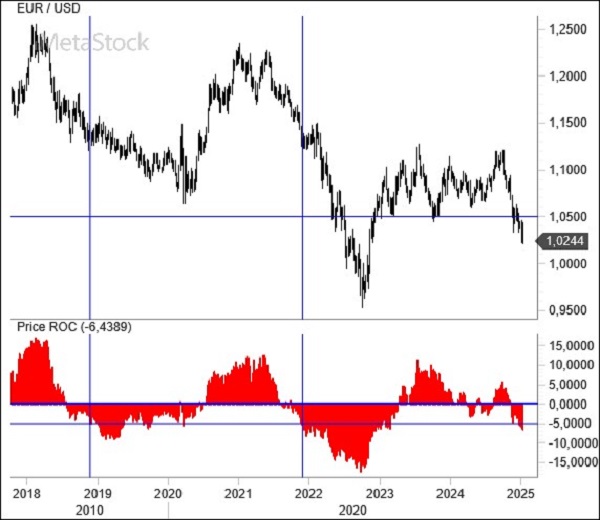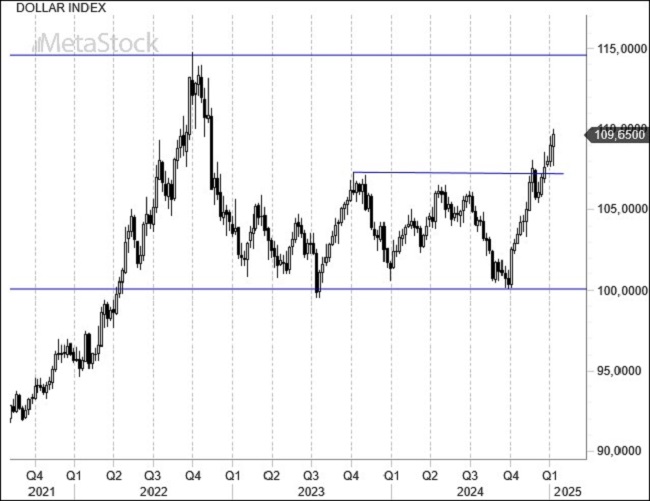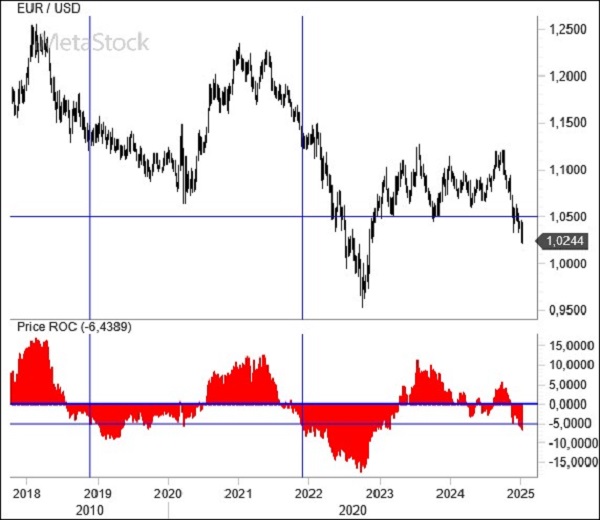- As Trump prepares to officially become the new President of the United States, the American economy shows no signs of slowing down, hinting at a resurgence of inflation that could force the Federal Reserve into a hold on rates.
- Europe faces political and economic challenges, reflected in a weakening euro that raises concerns at the European Central Bank (ECB) over inflationary imports, potentially undermining rate cuts.
- The EurUsd trajectory points decisively toward parity, an interim target in what remains a firmly entrenched bear market.
Economic Dynamics Under Trump’s Second Term and Inflation Risks
The past week was eventful, culminating in the anticipation of Trump’s return to the White House. On January 20, the former President will begin his second term, turning speculation about tariffs into actionable policy. While Trump has dismissed rumors of universal tariffs, favoring targeted measures on specific goods, recent reports from CNN suggest he may invoke a national emergency to implement protectionist strategies against foreign imports.
This policy speculation has strengthened the dollar, with 10-year Treasury yields nearing 5%. Supporting this trend were December’s robust U.S. job creation numbers, exceeding 200,000 new positions and outperforming analyst expectations. Additionally, the economic impact of recent wildfires in California remains under assessment.
The ISM Services Index highlighted the sector’s strong performance, with a composite score surpassing 54 and a notable surge in price components. This aligns with similar trends in the ISM Manufacturing Index, though the magnitude of the price growth in services has been the highest since February 2023—a clear signal of accelerating inflation.
The contrast between a politically stable and economically vibrant U.S. and a turbulent Europe (notably France and Germany) is stark. This contrast extends to Canada, which faces uncertainty following Prime Minister Trudeau’s resignation.
In Europe, inflation rose to 2.4% headline and 2.7% core, as expected. Germany and Spain saw acceleration, while France and Italy remained below 2%. Service inflation climbed to 4%. Despite this, the swap market continues to price in 100 basis points of rate cuts over the next 12 months, given weak macroeconomic data, such as a 5.4% drop in German factory orders. Against this backdrop, the EurUsd remains firmly on a path toward parity.
Technical Analysis: Bearish Euro Trends and Dollar Strength Confirmed
The euro struggles to find support amid a downward trend with technically ambitious targets below parity. This movement recalls the early Trump era when, following a brief post-election euro rally, the dollar strengthened significantly as Trump assumed office.
Currently, the EurUsd shows a year-to-date decline of less than 5%, a bearish signal historically associated with further declines, as seen in 2018 and 2021.

Technical analysis reinforces the dollar’s favorable momentum, likely to persist. The Dollar Index, having formed a double bottom in December, suggests an upside target 4-5% above current levels. This aligns with projections of EurUsd dropping to the 0.97/0.98 range, consistent with technical forecasts.



Leave a Reply
You must be logged in to post a comment.